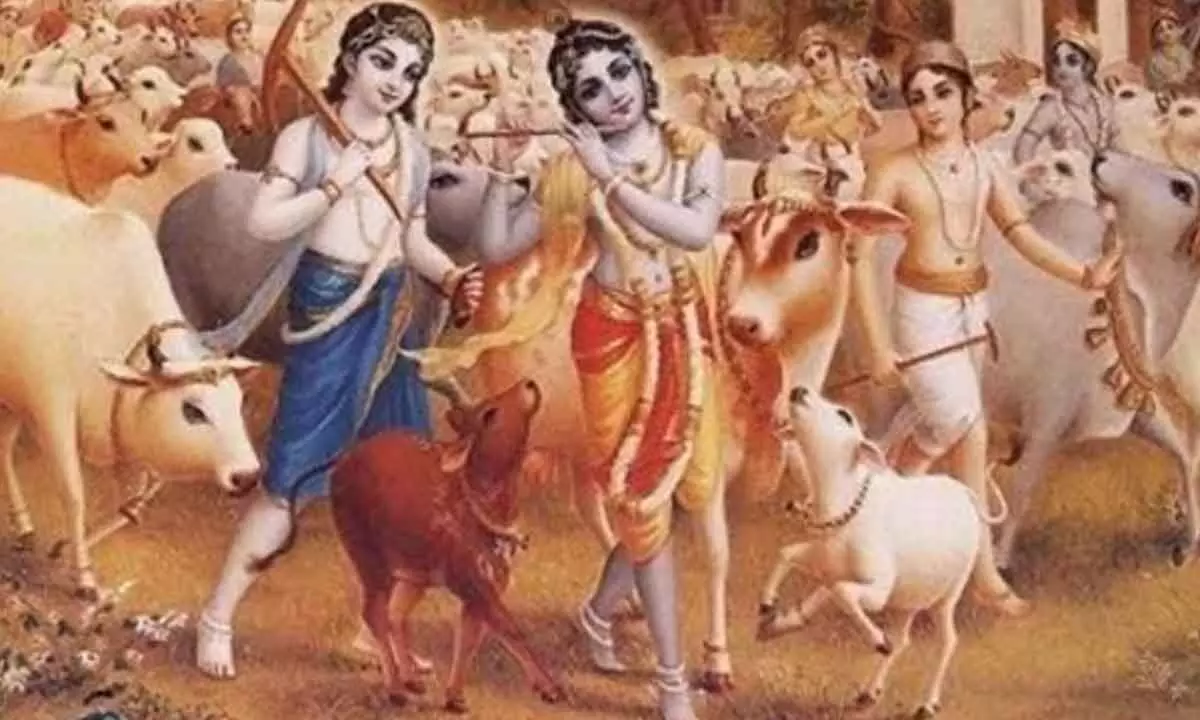Gopashtami 2024: Date, Muhurat, History, Significance, and Rituals to Celebrate Krishna’s Love for Cows

Gopashtami is a Hindu festival honoring Lord Krishna’s sacred connection to cows and his compassion for animals and nature.
Gopashtami is a revered Hindu festival that celebrates Lord Krishna's special bond with cows. Falling on the eighth day of Kartik Shukla, this festival highlights Krishna's role as a cowherd in Gokul and emphasizes the significance of cows in rural Indian life. It is also the only occasion when Shri Radha Rani reveals her lotus feet, known as Charan Darshan.
Historical Background of Gopashtami
According to Hindu scriptures, Lord Krishna convinced the people of Braj to discontinue their annual tribute to Lord Indra, the rain god. Angered, Indra sent a massive storm to flood the region. In response, Krishna lifted the Govardhan Mountain on his little finger, protecting the people and animals from the deluge for seven days. Humbled, Indra sought forgiveness, and on Gopashtami, Krishna was showered with divine milk by Surabhi, the sacred cow, earning him the title "Govinda" – protector of cows. Since then, Gopashtami has been observed to honour cows and Krishna’s kindness.
Significance of Gopashtami
Gopashtami holds deep spiritual meaning for devotees who gather in temples across Vrindavan, Gokul, Dwarkadheesh, Nathdwara, and Puri to worship Lord Krishna. Krishna, believed to be the eighth avatar of Lord Vishnu, held cows dear to him, symbolizing prosperity and nurturing. On this day, cows and calves are adorned with flowers, turmeric, roli, and bells. Many people also visit Gaushalas, offering food such as green grass, chapatis, and jaggery to seek blessings for health, wealth, and happiness.
Gopashtami 2024 Rituals and Traditions
1.Preparation for Puja: Devotees start the day by cleaning their homes and preparing for puja.
2.Morning Puja: After bathing, they worship Lord Krishna, lighting a diya with desi ghee and offering flowers, Tulsi leaves, and homemade sweets.
3.Decorating Cows: Those who own cows bathe and decorate them with turmeric, roli, flowers, and bells.
4.Feeding the Cows: Cows are offered green grass, chapati, and jaggery as a gesture of reverence.
5.Visits to Gaushalas: Devotees without cows go to Gaushalas, where they offer food to the cows there.
6.Evening Puja: An evening puja for Lord Krishna is held with offerings of food, including panchamrit and savory items.
7.Temple Celebrations: Special rituals are conducted at Lord Krishna temples to mark the day.
8.Traditional Dishes: Many families prepare dishes like sabzi, poori, kheer, and halwa as part of the celebration.
Gopashtami Muhurat 2024
Observing the correct timing for the Gopashtami puja adds to its spiritual significance, as devotees come together to honour Lord Krishna’s compassion and divine bond with cows.
Gopashtami serves as a beautiful reminder of Krishna’s love for animals, nature, and all forms of life, inspiring people to show kindness and compassion.















